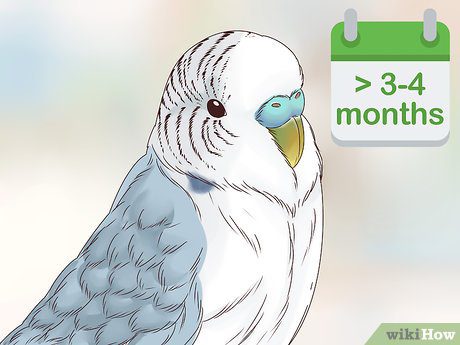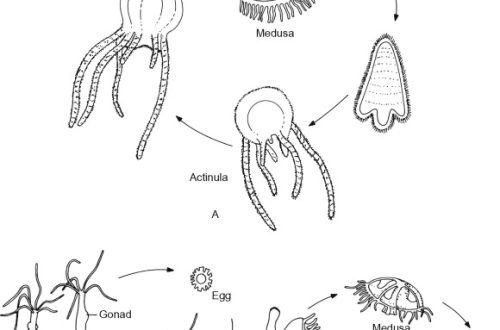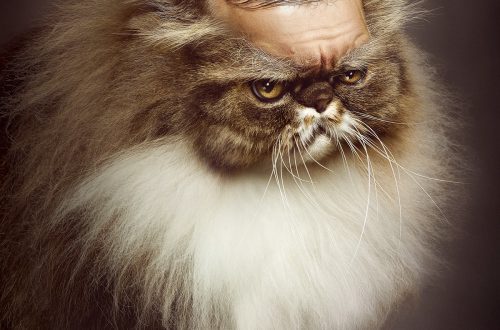
Find out the age of a budgerigar: external signs of a young parrot
7 days after birth, sometimes 2 days earlier, the chicks open their eyes, after a day or two they notice the first stumps of feathers. Feathers on the back, tail and wings appear at the third week of age, but the plumage acquires a formalized appearance by the age of one month. The difference from adults is only in size and color, they have it vague and without shades.
In conditions of captivity reaching the age of one month, little parrots are already leaving the nest and walking on the floor of the cage or aviary, they are watched by adult birds and both parents and other parrots bring them food. After some time, the chick itself begins to take food. From this moment, as a rule, the owners part with their pet and transfer it to other good hands.
It is possible that in a pet store you will get a completely mature or even an old bird instead of a young chick.
How to determine the age of a budgerigar?
In order to deal with the age of the budgerigar, you need pay attention to the following factors:
- When you first look at a bird, pay attention to wavy cap on the head. In young budgerigars, such waves start from the beak and spread throughout the head. The exceptions are the breeds of albinos and lutinos, these parrots do not have such a pattern conceived by nature. These babies will remain for about 3-4 months, then the first, juvenile molt will occur.
- At a young budgerigar eyes large and completely black, and in an adult, the pupil is surrounded by a white ring. Older birds can be given away by the lack of plumage around the eyes. The iris appears by six months, however, the appearance of a white rim around the pupil is an individual process and can occur in some cases only after 10 months. A wide light rim means that the parrot is over a year old.
- Chicks have a black beak. Up to one and a half to two months from birth, parrots have a black smear on their beak, which will soon disappear on its own, this will happen when the parrot grows up. Sometimes it happens that the beak loses a black spot even earlier, on the twenty-fifth or even on the twentieth day of life. This feature is typical for lighter types of parrots. Adult birds have a straw-yellow or greenish beak.
- Budgerigar chicks are capable of flying already when they reach the age of one month. Although the plumage is still being formed, it is usually enough to get the first flight experience. Thus, if the seller claims that the chick cannot fly yet, you should be on the lookout. The parrot cub for sale, by the age it has reached, usually by this time it is more than a month old, is already able to explore the open spaces.
- Guess the age of the budgerigar mpossible according to body size. An adult has a body length of about 20 centimeters.
- Young parrots have a short tail. But it is able to grow to the length of an adult about two months after birth. But it is worth knowing that this may also be an adult bird that has lost its long tail feathers for some reason unknown to you.
- By the age of one and a half months, a budgerigar differs in the formed plumage, from now on, the parrot should look like a “feather to feather”. If you are assured that the bird is young and the feathers have not yet fully grown, then the bird is probably sick or old. The plumage of incompletely formed chicks is dull and indistinct in contrast. Over time, it acquires a bright and clear appearance. They take off the chick outfit and acquire the adult plumage of a bird at the age of six months or a little earlier.
- The criterion for determining the age of a budgerigar is wax color (this is the section of the beak where the nostrils are located). Basically, the wax of young parrots is painted in a light pink, bluish or beige hue. After the onset of puberty, which occurs at the age of six months, it acquires a darker color. It should be noted that such metamorphoses are applicable to a greater extent to females. Males usually wear a pinkish-purple cere, and it does not change over time. However, everything has its exceptions and the wax can have a blue color, as well as blue fragmentary spots. The color of the cere is not a determining factor; when making a verdict on a bird regarding its age, all signs must be considered comprehensively.
- Spots on the neck also give out the age of the wavy bird. They are distinguished by their characteristic shape, the older the parrot, the smoother the contours of the spots become. Young pets have throat spots in the form of numerous sectors and semicircles of irregular shape.
- Finally, it is very easy to determine the age of a budgerigar by examining its paws. If the scales on the paws fit snugly together, giving the impression of a smooth surface, know that you have a young “copy” in front of you. Over time, in a parrot, individual scales become noticeable, respectively, the older the bird, the more loose the cover of its paws becomes.
Attention!
- After the first molt, occurring at three, three and a half months, it is almost impossible to know the age of parrots. It happens that the first molt is late and begins at six months, but this is an exception to the rule. But finding out the age of a parrot after a year is even more difficult. One can only confidently say whether this bird is young or old.
- Lutinos and albinos practically cannot be determined by age, since the iris is dark or red does not depend on age. It is difficult to determine the age of the male from the cere, since the cere remains unchanged pinkish-purple from infancy. By wax, you can determine the age of the female, it changes in color in accordance with the “generally accepted” rules.
How long does a budgerigar live?
The budgerigar lives about ten, maximum fifteen years. When comparing its lifespan with a human, the age of a one-year-old parrot is equal to the age of a ten-year-old child. But this comparison is very conditional.





